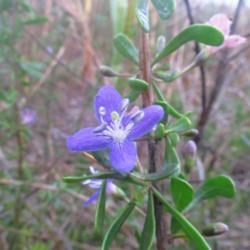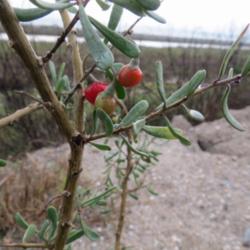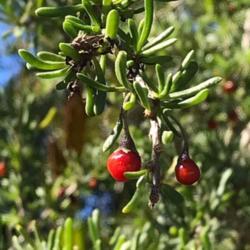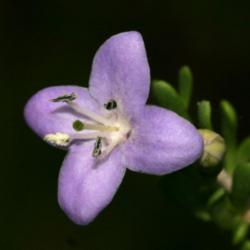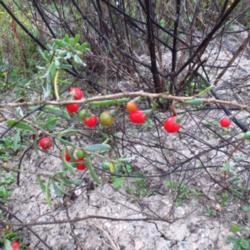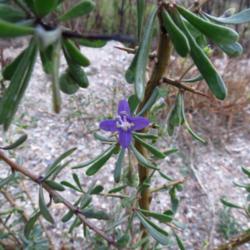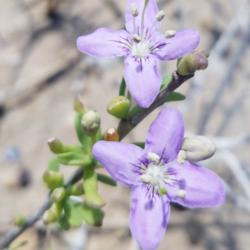| Plant Habit: | Shrub Cactus/Succulent |
| Life cycle: | Perennial |
| Sun Requirements: | Full Sun to Partial Shade |
| Water Preferences: | Mesic |
| Minimum cold hardiness: | Zone 7a -17.8 °C (0 °F) to -15 °C (5 °F) |
| Maximum recommended zone: | Zone 11 |
| Plant Height: | 4 to 6 feet |
| Leaves: | Evergreen |
| Fruit: | Showy Edible to birds Other: Red berries |
| Flowers: | Showy |
| Flower Color: | Other: Lavender |
| Bloom Size: | Under 1" |
| Flower Time: | Spring |
| Suitable Locations: | Beach Front |
| Uses: | Provides winter interest Erosion control |
| Edible Parts: | Fruit |
| Wildlife Attractant: | Bees Birds |
| Toxicity: | Leaves are poisonous Other: The leaves contain damascenone, a terpenoid essential oil. |
| Propagation: Seeds: | Other info: Ripe berries may be picked from the bushes in the fall and the seeds extracted by maceration. Seed dormancy in this genus is variable. Seeds of some species may require stratification at 41 degrees for 60-120 days. |
| Propagation: Other methods: | Cuttings: Stem Layering Other: Suckers |
| Pollinators: | Bees |
| Miscellaneous: | Tolerates poor soil |
